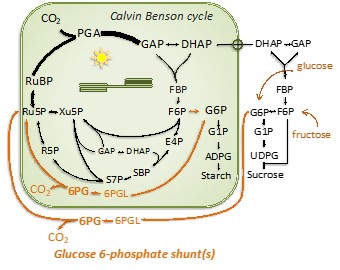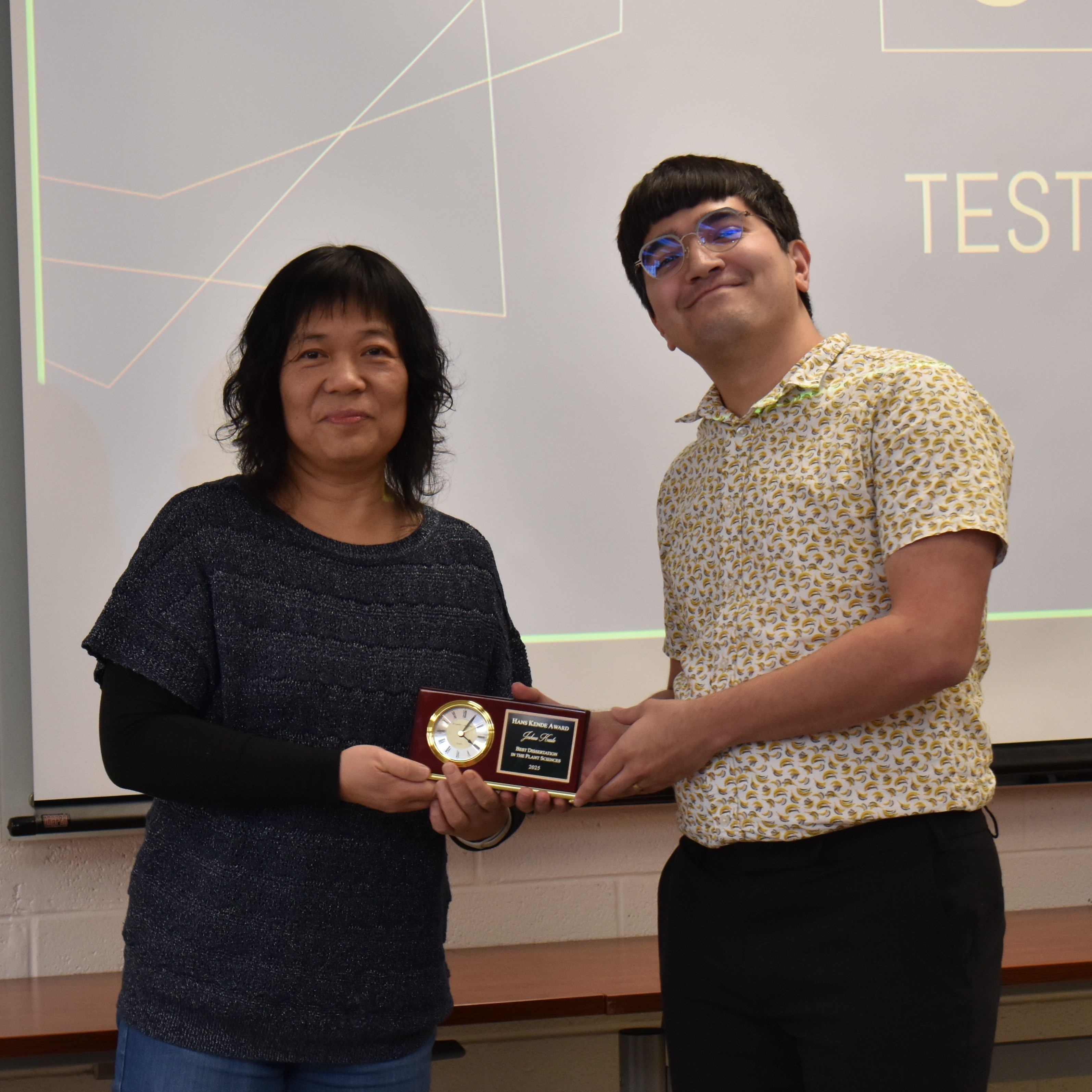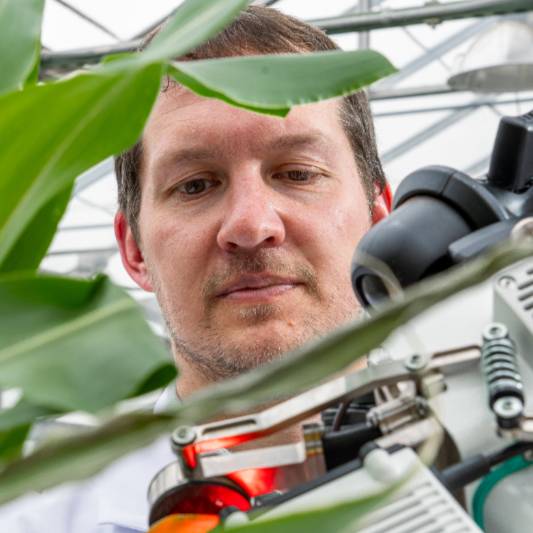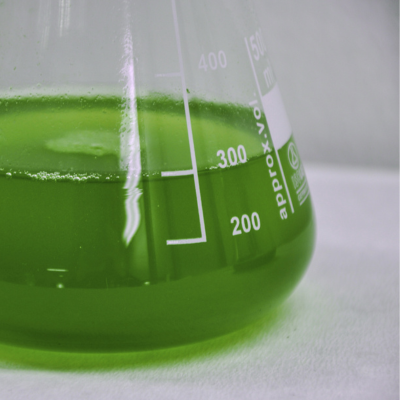Recycling carbon in photosynthesis
Isoprene and photosynthetic metabolism labeling experiments provided evidence that glucose is recycled back into photosynthetic metabolism.

Scientific Achievement
Discovered evidence that glucose is recycled back into photosynthetic metabolism.
Significance and Impact
The pathway for converting carbon dioxide to starch and sucrose in photosynthesis was discovered by labeling using isotopes of carbon. However, not all carbon in the pathway becomes labeled. A similar phenomenon was known for isoprene emission, not all isoprene is labeled when carbon isotopes are fed. We showed that these observations are linked, isoprene provides a window on photosynthesis.
Research Details
- As much as 40% of isoprene emitted from a leaf fed an isotope of carbon does not become labeled. This varies with stress.
- We showed that this is because photosynthesis metabolites do not label fully.
- Isoprene accurately reflects the labeling of photosynthesis metabolites.
- Modeling showed that this is likely caused by a flow of unlabeled glucose into photosynthetic metabolism through a shunt that bypasses part of photosynthesis.
- The amount of glucose that follows this pathway varies with stress, for example it is much higher at high temperature.
- Isoprene provides a non-destructive method for measuring this flow of carbon.
Related people: Thomas D. Sharkey (CA), Alyssa L. Preiser, Sarathi M. Weraduwage, Linus Gog
DOI: 10.1042/BCJ20200480
This work was primarily funded by the US Department of Energy, Office of Basic Energy Sciences



